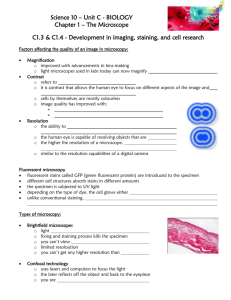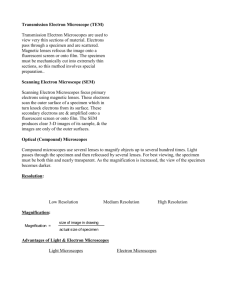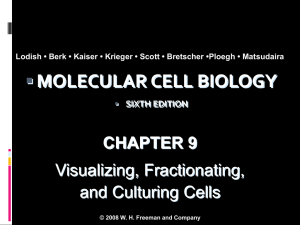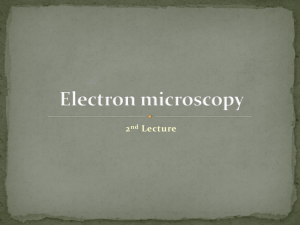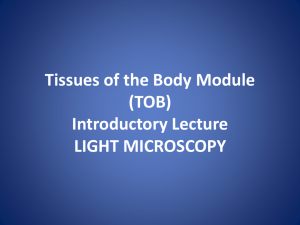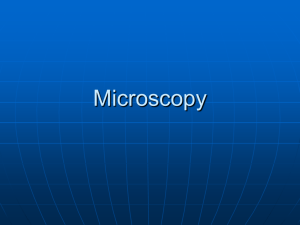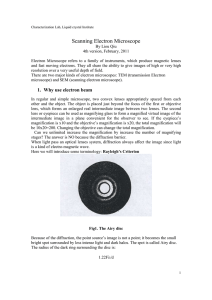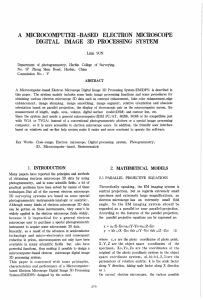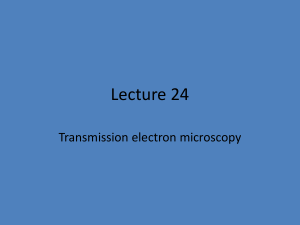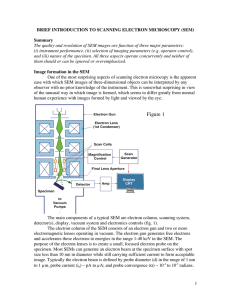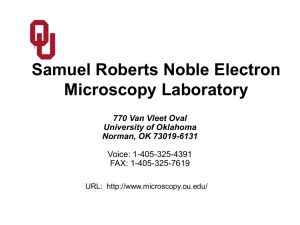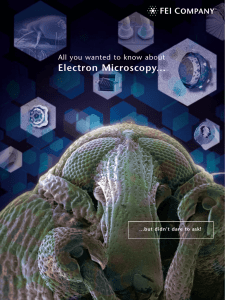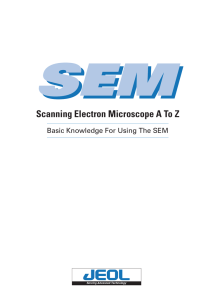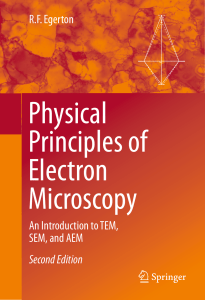Types of Microscopes Chart
advertisement
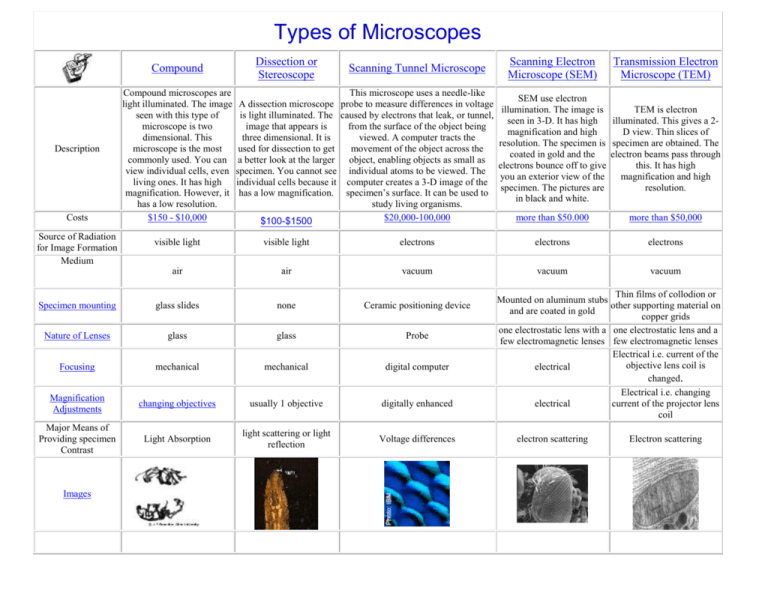
Types of Microscopes Compound Description Costs Source of Radiation for Image Formation Medium Compound microscopes are light illuminated. The image seen with this type of microscope is two dimensional. This microscope is the most commonly used. You can view individual cells, even living ones. It has high magnification. However, it has a low resolution. $150 - $10,000 Dissection or Stereoscope Scanning Tunnel Microscope This microscope uses a needle-like A dissection microscope probe to measure differences in voltage is light illuminated. The caused by electrons that leak, or tunnel, image that appears is from the surface of the object being three dimensional. It is viewed. A computer tracts the used for dissection to get movement of the object across the a better look at the larger object, enabling objects as small as specimen. You cannot see individual atoms to be viewed. The individual cells because it computer creates a 3-D image of the has a low magnification. specimen’s surface. It can be used to study living organisms. $20,000-100,000 $100-$1500 Scanning Electron Microscope (SEM) Transmission Electron Microscope (TEM) SEM use electron illumination. The image is TEM is electron seen in 3-D. It has high illuminated. This gives a 2magnification and high D view. Thin slices of resolution. The specimen is specimen are obtained. The coated in gold and the electron beams pass through electrons bounce off to give this. It has high you an exterior view of the magnification and high specimen. The pictures are resolution. in black and white. more than $50.000 more than $50,000 visible light visible light electrons electrons electrons air air vacuum vacuum vacuum Specimen mounting glass slides none Ceramic positioning device Nature of Lenses glass glass Probe Focusing mechanical mechanical digital computer Magnification Adjustments changing objectives usually 1 objective digitally enhanced Major Means of Providing specimen Contrast Light Absorption light scattering or light reflection Voltage differences Images Thin films of collodion or Mounted on aluminum stubs other supporting material on and are coated in gold copper grids one electrostatic lens with a one electrostatic lens and a few electromagnetic lenses few electromagnetic lenses Electrical i.e. current of the objective lens coil is electrical changed. Electrical i.e. changing electrical current of the projector lens coil electron scattering Electron scattering





